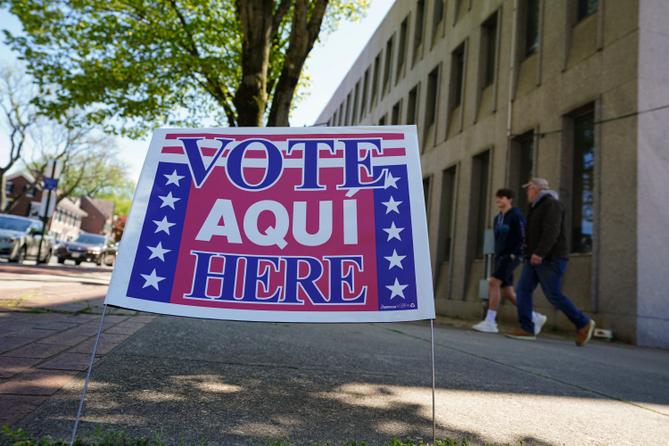Spotlight PA is an independent, nonpartisan, and nonprofit newsroom producing investigative and public-service journalism that holds power to account and drives positive change in Pennsylvania. Sign up for our free newsletters.
Update, Sept. 18: Democrats in Pa. approach 2024 election with slimmest voter registration advantage in decades
HARRISBURG — For the first time in at least 16 years, the Democratic and Republican parties in Pennsylvania are within half a million registered voters of one another.
Since 2008, Democrats’ registration edge over Republicans has steadily shrunk — from a 12% advantage in April 2008 to about a 4% advantage in April 2024, according to a Spotlight PA analysis of Department of State data.
The number of people registered as independents or under a third party has also grown, from 11% of total registered voters in 2008 to 15% this year.
Political consultants who spoke with Spotlight PA said that while registration trends can signal an electorate's moods, they can't tell you everything about how a closely divided state like Pennsylvania will vote.
Stephen Medvic, a government professor at Franklin & Marshall College, said 2010 was a high water mark for Democratic registration in recent Pennsylvania history and that there was “nowhere to go but down” from there in terms of registration numbers.
The party’s relatively lower registration rate is “not good [for Democrats], but I’m not sure it spells doom,” said Medvic.
Beyond that, consultants say Pennsylvania has undergone a political realignment in the last decade and a half. Anne Wakabayashi, a Democratic political consultant with public relations firm BerlinRosen, said registration is “catching up more with the behavior of the electorate.”
That behavior, she said, includes working-class voters in Western Pennsylvania who have historically been part of labor unions changing their registration to Republican in recent years, coupled with an influx of highly educated and wealthy transplants establishing themselves in the suburbs of Philadelphia.
Sam Chen, a GOP political consultant based in the Lehigh Valley, pointed to the same dynamic and noted that it can be seen in the commonwealth’s changing registration geography. Democrats used to dominate counties in the industrial and rural parts of the state, particularly in the southwest and northeast. Now those areas are redder, while Democrats have consolidated support in suburbs, particularly in the populous southeast.
“The Republican Party has shifted away from traditional conservativism into a more populist version of it, which speaks to traditional Democratic values like made-in-America union labor,” Chen said. “On the Democratic side, I think you see that shift away from traditional liberalism over to a little bit more of a progressivism.”
Wakabayashi noted that registration doesn’t always keep pace with quickly shifting political preferences.
In her experience, voters can be slow to change registration even as their political opinions change. Sometimes they vote across party lines, opt to split their ticket and vote for candidates in both parties, or just don’t turn out to cast a ballot.
For example, despite a dwindling advantage in the party’s number of registered voters in Pennsylvania, Democrats won top-of-ticket races for president in 2020, and U.S. Senate and governor in 2022.
However, in the latter year, Republicans Stacey Garrity and Tim DeFoor won statewide races for state treasurer and auditor general — flipping those offices.
Political consultants and academics also say the increase in independent and third-party voters is significant and could indicate a growing disdain for the major political parties and a wider apathy that results in low voter turnout, such as during the 2024 primary election.
This is particularly notable as Pennsylvania is one of 10 states with a closed primary system, which excludes independent and third-party voters from choosing which major party candidates will end up on the November general election ballot.
Some experts noted that this system could lead to fewer voters who consider themselves politically independent registering as such. Plus, voters can switch their party registration up to 10 days before the election, which they may do close to a primary so that they can participate in choosing a major party candidate, before switching back.
“As our partisans are getting increasingly more partisan, there are a lot of people that are heading to either third parties or the middle of the road,” said Wakabayashi. “Some of that is disillusionment with the parties on both sides.”
BEFORE YOU GO… If you learned something from this article, pay it forward and contribute to Spotlight PA at spotlightpa.org/donate. Spotlight PA is funded by foundations and readers like you who are committed to accountability journalism that gets results.
